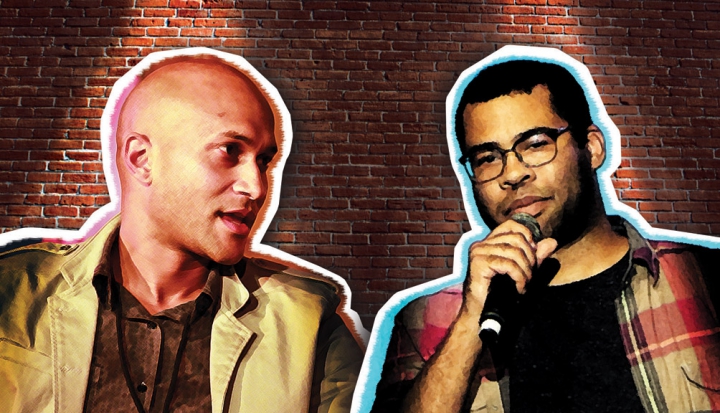How do comics walk the fine line between being hilarious and hurtful? It’s all in the delivery.
Earlier this year the comic duo of Keegan-Michael Key and Jordan Peele landed on the cover of TIME with the accompanying headline, “The Case for Mockery.” In their essay, the pair behind the sketch comedy show Key & Peele charged that America had traded in its sense of humor for political correctness.
The comedians said that we had become too sensitive to jokes about certain groups. Exempting some people from mockery, they argued, is actually a form of bullying because it excludes them from public discourse. They suggested that society is better off by making fun of everything, including ethnicity, sexuality, and disabilities.
The argument has its merits. It’s true that honesty creates optimal conditions for laughter, and some of the best comics have also been the most daring. Here, legends such as Lenny Bruce, George Carlin, and Richard Pryor come to mind.
But I balk at the notion that a joke is funny or worth pondering simply because it dares to offend. The litmus test of whether a joke is on point or cruel is to ask if it punches up or down. And not all comedians respect the difference.
One of my favorite shows growing up was the animated series Family Guy, featuring doofus dad Peter Griffin among other outlandish, dysfunctional characters. To a 16-year-old, its nonstop stream of sarcasm was a tonic compared to the sappy family sitcoms the show was designed to parody.
Now as an adult with slightly more awareness of the world and other people, it’s plain to see how the show’s creator, Seth MacFarlane, has traded for years in lowest common denominator stereotypes. In the world of Family Guy, women are oversexed airheads, Jews are anxious misers, and Hispanics are stoic housekeepers. Perhaps most controversial of all is the show’s penchant for making jokes about victims of rape or sexual abuse. MacFarlane’s repeated offenses have provoked petitions with names like “Seth MacFarlane: Rape is Not a Punchline!”
The best comics know how to use shocking language or humor to point their audience to some deeper truth. Given that there is no loftier insight to be had in Family Guy, no moment of enlightenment, it’s hard to see it as anything but bullying.
And here’s where the TIME article leaves me cold. Key and Peele claim that making fun of everyone includes them in a conversation. But they don’t address the fact that some people—for lack of visibility or cultural power—have often been denied a voice.
Sarah Silverman acknowledged as much in a stand-up bit where she said that, far from edgy, rape jokes are actually a comedian’s safest bet. “Who’s going to complain about a rape joke? Rape victims?” she wondered aloud. “They don’t even report rape.”
It elicits a wince partly because it touches on something real. Comedy that punches down isn’t adventurous—it’s lazy. Which raises the question: Should such sensitive topics be off-limits?
I recently heard an interview on the public radio program Studio 360 with a young comedian named Hari Kondabolu. The son of Indian immigrants, Kondabolu often addresses hot-button issues such as race. The host asked Kondabolu if there were any subjects he wouldn’t touch, and I found myself agreeing with his response. “It’s all context,” he replied. “It’s also the relationship and the rapport you build with an audience.”
Curiously enough, Key & Peele is an illustration of context-rich humor. Both comedians are biracial, and they often portray characters that play on stereotypes of black culture. But as The New Yorker’s Emily Nussbaum observes, Key and Peele perform the characters in unpredictable ways that make them more visible as human beings, not less. “Their idea of a parody of The Wire involves a gangster losing control of his bowels,” she says.
Louis C.K. is another comedian who walks this tightrope. Both on stage and in his excellent television show, Louie, he has a way of bringing out the humanity of others, even when saying things that would be considered outrageous in other settings.
In one of his stand-up specials, he recalls seeing a frail, elderly Chinese woman as she ambled down the street. “What are her thoughts?” he ponders, trying to inhabit a person’s reality so alien to his own. He then describes the first thought that entered his head, launching into a crude “me Chinese” singsong. The audience roars. “That’s how dumb I am,” he sighs. “That I think Chinese gibberish that I made up is in her actually Chinese mind.”
Were some people in the audience simply laughing at the sounds of imitation Chinese? Perhaps. But C.K. had wagered that those who knew his stuff would correctly discern that he was the butt of the joke, an anecdote about the pratfalls of trying to make sense of people’s differences. In the right hands, a tired school-yard insult had become a rough-hewn gem of a joke. As a Chinese American who tends to be sensitive to racial material, I personally wasn’t offended. But neither would I begrudge another person who was.
Such is the complicated nature of humor, and it’s why it’s worth talking about. A tricky relationship exists between comedian, audience, and context, and it’s one that’s always being negotiated. To dismiss criticism as mere political correctness is to ignore these dynamics. It simply comes across as “Laugh, or else.”
We rightly reward comics who succeed at risky humor, but it’s also an audience’s duty to let them know when they’ve crossed the line. Hurting people deserve better than to have even more abuse heaped upon them, and comics deserve better than our uncritical praise. If they can dish it out, they can take it, too.
This article appeared in the September 2014 issue of U.S. Catholic (Vol. 79, No. 9, pages 40-41).
Image: Left: Wikimedia photo cc by Heather Sejnow. Right: Wikimedia photo cc by Kevin Edwards













Add comment